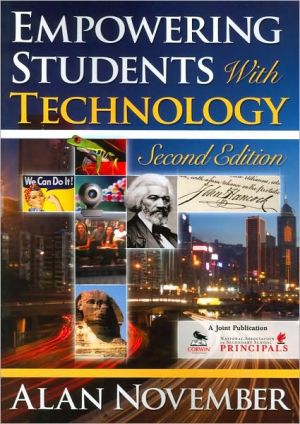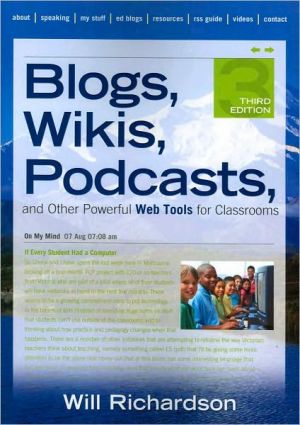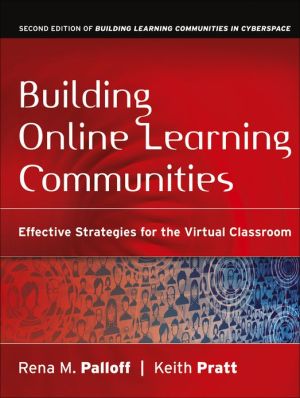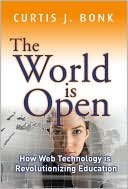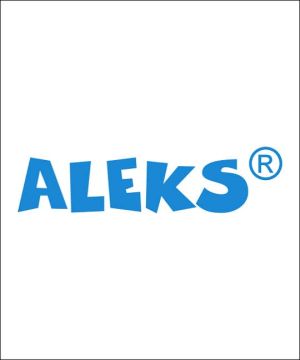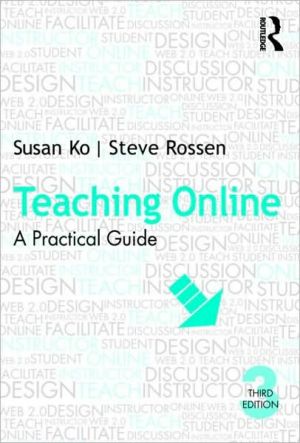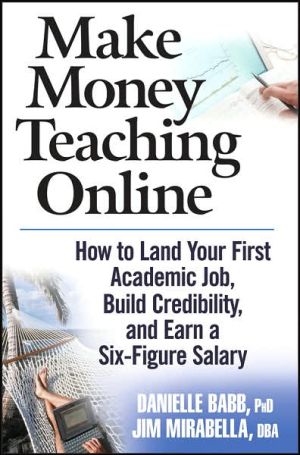Empowering Students with Technology
Fifty Web sites, lesson ideas, new resources, and real-life examples help educators use technology to expand classroom experiences and strengthen students’ critical thinking, research, and problem-solving skills.\ \ \ From an international leader in facilitating the integration of technology into learning and critical thinking, Empowering Students With Technology will energize the classroom with exciting ideas that will spark students` interest and rekindle the thrill...
Search in google:
Technology consultant November explores and explains the opportunities technology provides to empower students to learn how to learn. He discusses the new basic skill of information literacy and covers how teachers can be successful "digital immigrants"—not born to the world of technology, like the current generation, but able to help their students thrive in it nonetheless. He provides examples of skills needed to solve real problems (e.g., communication, data interpretation, collaboration), and how teachers can facilitate their students' learning in these areas with specific technology tools. Annotation © Book News, Inc., Portland, OR
Preface ixAcknowledgments xiiiAbout the Author xvIntroduction 1Chapter 1 Teaching and Learning the Structure of Information 11Information Literacy: A New Basic Skill 12Zack's Story: The Danger of Ignorance 12MAPping the Internet: Meta-Web Information, Author, and Purpose 14Meta-Web Information 14Understanding the Web Address 15E-Venture: Invent a Domain Name 17Looking Back in Time 18Digital Threads: The Structure of Linked Information 18Internet Sleuth: The Link Command 20E-Venture: Register.com 23Search Engines 24E-Venture: Sorting Out Search Engines 25Author 26Purpose: Advocacy and Objectivity 26Confusing Technical Mastery With Critical Thinking 27E-Venture: Comparing for Understanding 27Blocking Versus Access 28The Digital Gutter 29Professional Growth Opportunity: Relate and Reflect on Chapter 1 30Chapter 2 Empowering Learning by Expanding Relationships 31Planning for Learning (Instead of Technology) 31Creating Collaborative Partnerships 34Skype in the Classroom 35Gro up Work on a Project 35Ask an Expert 36Getting Help After Hours 36Inclusion 36Revisiting the Role of the Family 36School-to-Family Connections 37Bridging the Digital Divide 38School-to-World Connections 38Cultural Connections 39E-Venture: Information Campaign 40E-Mail in a Cultural Context 41Teacher-Created Web Sites 42Publishing Student Work on the Web 43Professional Growth Opportunity: Relate and Reflect on Chapter 2 44Chapter 3 Emerging Roles Within the Knowledge Community 47Teachers as Digital Immigrants 48Reverse Mentoring 48Help andSupport in Your Own Backyard 50Collegiality 50The Anonymous Reviewer 51Collaboration With Parents 52E-Venture: Dino Documentary 52Benchmarking Educational Practice to the Knowledge Community 53Shifting Control 54Real Problems 56Raising Expectations: Students as Knowledge Producers 57Colleen's Story: Colleen's Health Care Database Project 58Promoting Student Responsibility for Learning 59E-Venture: Connecting With Congress 61Managing Fear 62Professional Growth Opportunity: Relate and Reflect on Chapter 3 64Chapter 4 Accessing Primary Sources to Enhance Critical Thinking 65Using Primary Sources 65National Archives and Records Administration (NARA) 66The Digital Classroom 67Archival Research Catalog (ARC) 67The Archivists 70E-Venture: Do-It-Yourself School Archives 70Teaching the Skills to Assess Primary Sources 72Perspective 73Database Search Skills 73Visual Literacy 74E-Venture: What's Wrong With This Picture: Adventures in Visual Literacy 74Thinking Critically About Primary Source Material 75Generating Questions 75Identifying Information Sources 75Student-Generated Data 76Jessie's Story: Wavelength Probe 76Experts 77Finding an Authentic Audience for Student Analysis 77E-Venture: Kennedy Versus Nixon, October 13, 1960 78NARA Worksheets 78Professional Growth Opportunity: Relate and Reflect on Chapter 4 81Chapter 5 Online Learning 83Pioneers on the Digital Frontier 85A World Away From the Desktop 86Changing Roles and Interactions 88Positive Student Interaction 88Improved Teacher Interaction 89Peer Interaction on the Internet 89Better Parent Interaction 90Students Involved in Online Learning 90Who Makes a Good Online Student 91Motivation to Take the Class 91Self-Discipline and Responsibility 91The Ability to Work Independently 92Parental Support 92Online Learning Is Not Right for Everybody 92Teachers Involved in Online Learning 93Who Makes a Good Online Teacher 94Devotes Time and Energy to Teaching Online 94Available to Students 94Creative and Willing to Experiment 95Breaks Down the Curricula Into Smaller Units 95Focuses on Concepts, Not Class Periods 97Integrates Curricula 97Teacher Training 97Positive Consequences of Teaching Online 98Individual Courses: Supporting Learning 98Building Online Learning Environments 99Building on Exceptional Programs 99Professional Growth Opportunity: Relate and Reflect on Chapter 5 100Appendix 103Bibliography 107Index 109
\ Bena Kallick“Alan November provides an exceptional lens that clarifies the confusion in the field. Educators know the significance and the impact of technology on education, but many don’t understand how to make good use of technology to further student learning. November presents both the theoretical and practical in such a compelling way that it makes me want to remind educators that we cannot keep doing what we have always done—not with the possibilities that technology opens for us!”\ \
